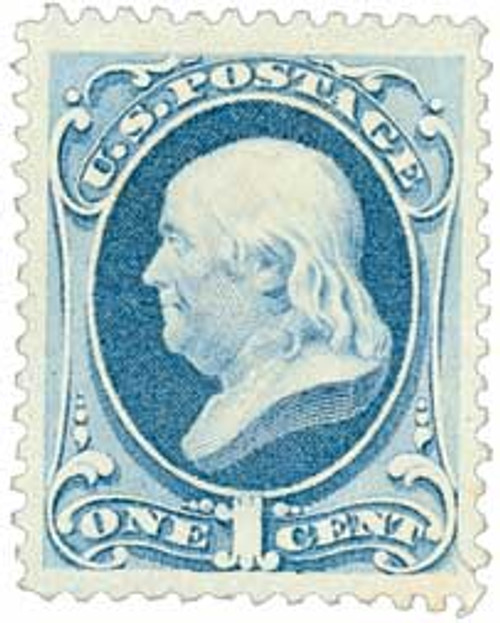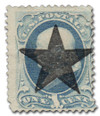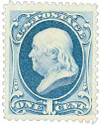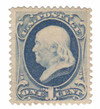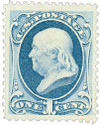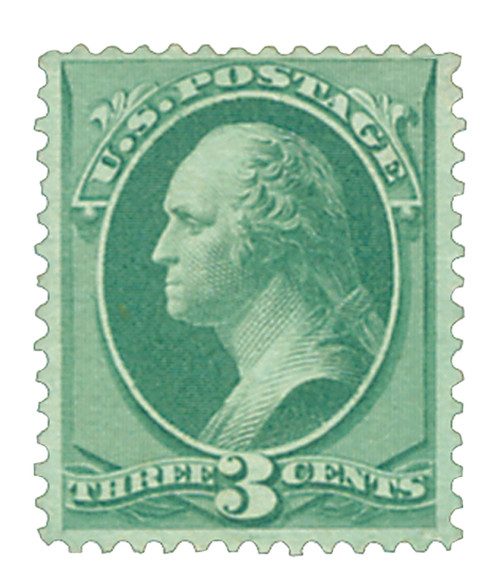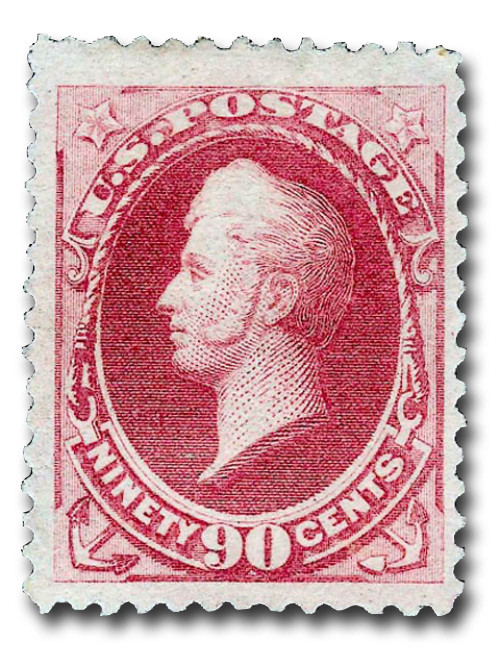
1879 1c Franklin
# 182 - 1879 1c Franklin
$3.25 - $1,040.00
U.S. #182
1879 1¢ Franklin
American Bank Note Printing
1879 1¢ Franklin
American Bank Note Printing
Earliest Known Use: January 3, 1879
Quantity issued: 591,756,900 (estimate)
Printed by: American Bank Note Company
Method: Flat plate
Watermark: None
Perforation: 12
Color: Dark ultramarine
This stamp features the secret mark of the 1¢ Continental stamp (#156) and is identical to it except it’s printed on soft paper.
Printing Contract Changes Hands Once Again
Continental Bank Note Co. was awarded a second contract that covered the period of 1877-1881. On February 4, 1879, the American Bank Note Company took over Continental, and the contract was assumed by American. Since American acquired all the old plates used by National when the two companies consolidated, the American Bank Note stamps all bear the same secret marks. Those plates that did not previously have secret marks were not altered in any way.
One can, however, differentiate between the stamps printed by Continental and American by determining which type of paper was used. Both National and Continental used hard paper, which is fairly white, has a smooth surface, and is uniform in thickness. In addition, the stamp is fairly translucent when held up to a window or a bright light. Hard paper is sometimes better referred to as being a grayish or bluish white.
American, on the other hand, used soft paper, which is characterized by being thicker and having a coarser and uneven texture. When compared to hard paper, it is yellowish in appearance and is not as translucent.
U.S. #182
1879 1¢ Franklin
American Bank Note Printing
1879 1¢ Franklin
American Bank Note Printing
Earliest Known Use: January 3, 1879
Quantity issued: 591,756,900 (estimate)
Printed by: American Bank Note Company
Method: Flat plate
Watermark: None
Perforation: 12
Color: Dark ultramarine
This stamp features the secret mark of the 1¢ Continental stamp (#156) and is identical to it except it’s printed on soft paper.
Printing Contract Changes Hands Once Again
Continental Bank Note Co. was awarded a second contract that covered the period of 1877-1881. On February 4, 1879, the American Bank Note Company took over Continental, and the contract was assumed by American. Since American acquired all the old plates used by National when the two companies consolidated, the American Bank Note stamps all bear the same secret marks. Those plates that did not previously have secret marks were not altered in any way.
One can, however, differentiate between the stamps printed by Continental and American by determining which type of paper was used. Both National and Continental used hard paper, which is fairly white, has a smooth surface, and is uniform in thickness. In addition, the stamp is fairly translucent when held up to a window or a bright light. Hard paper is sometimes better referred to as being a grayish or bluish white.
American, on the other hand, used soft paper, which is characterized by being thicker and having a coarser and uneven texture. When compared to hard paper, it is yellowish in appearance and is not as translucent.

